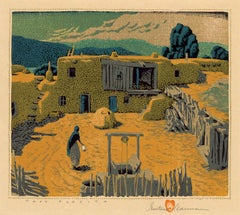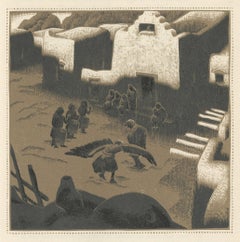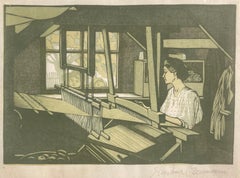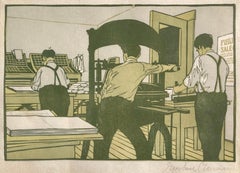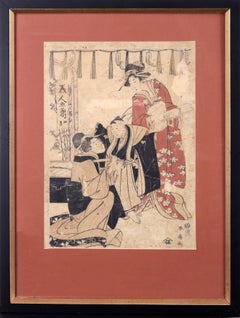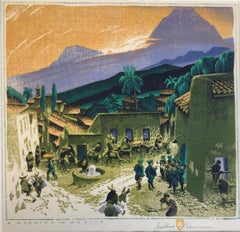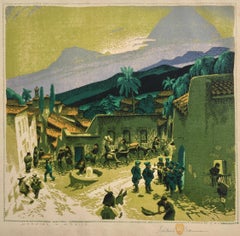Gustave Baumann Prints and Multiples
Gustave Baumann was born in Magdeburg, Germany, on June 27, 1881. Baumann immigrated to the USA as a child. He grew up in Chicago but became curious about New Mexico. He visited friends there in 1917 and settled in Santa Fe in 1918. He spent over 50 years there, where he participated in the art community. He created woodblocks from which he made prints and also became a carver of saints and marionettes, working with the Marionette Theatre. Baumann also created numerous paintings in bright colors. His woodcut subjects are church figures, scenes of sacred Indian pictographs and landscapes, including the Grand Canyon. During the 1930s, Baumann was a Works Progress Administration co-ordinator for Santa Fe. He died in Santa Fe on October 8, 1971.
1940s American Modern Gustave Baumann Prints and Multiples
Woodcut
1930s American Modern Gustave Baumann Prints and Multiples
Woodcut
1910s American Modern Gustave Baumann Prints and Multiples
Woodcut
1910s American Modern Gustave Baumann Prints and Multiples
Lithograph
1910s Modern Gustave Baumann Prints and Multiples
Woodcut
1990s Modern Gustave Baumann Prints and Multiples
Woodcut
1850s Edo Gustave Baumann Prints and Multiples
Paper, Ink, Woodcut
Early 20th Century American Modern Gustave Baumann Prints and Multiples
Wool, Engraving
Mid-19th Century Edo Gustave Baumann Prints and Multiples
Paper, Ink, Woodcut
1870s Gustave Baumann Prints and Multiples
Woodcut
1930s Modern Gustave Baumann Prints and Multiples
Lithograph
2010s Folk Art Gustave Baumann Prints and Multiples
Woodcut, Screen
1850s Edo Gustave Baumann Prints and Multiples
Paper, Ink, Woodcut
1910s American Modern Gustave Baumann Prints and Multiples
Color, Woodcut
1940s American Modern Gustave Baumann Prints and Multiples
Woodcut
Late 20th Century American Modern Gustave Baumann Prints and Multiples
Screen
1850s Edo Gustave Baumann Prints and Multiples
Paper, Ink, Woodcut
1930s American Modern Gustave Baumann Prints and Multiples
Woodcut
1930s American Modern Gustave Baumann Prints and Multiples
Woodcut
1920s Gustave Baumann Prints and Multiples
Woodcut
1920s American Modern Gustave Baumann Prints and Multiples
Early 20th Century Gustave Baumann Prints and Multiples
Woodcut
1930s American Modern Gustave Baumann Prints and Multiples
Woodcut
1930s American Modern Gustave Baumann Prints and Multiples
Woodcut
Early 20th Century American Modern Gustave Baumann Prints and Multiples
Woodcut
Mid-20th Century American Modern Gustave Baumann Prints and Multiples
Woodcut
1910s Realist Gustave Baumann Prints and Multiples
Woodcut
1910s American Modern Gustave Baumann Prints and Multiples
Woodcut
1920s Gustave Baumann Prints and Multiples
Woodcut
